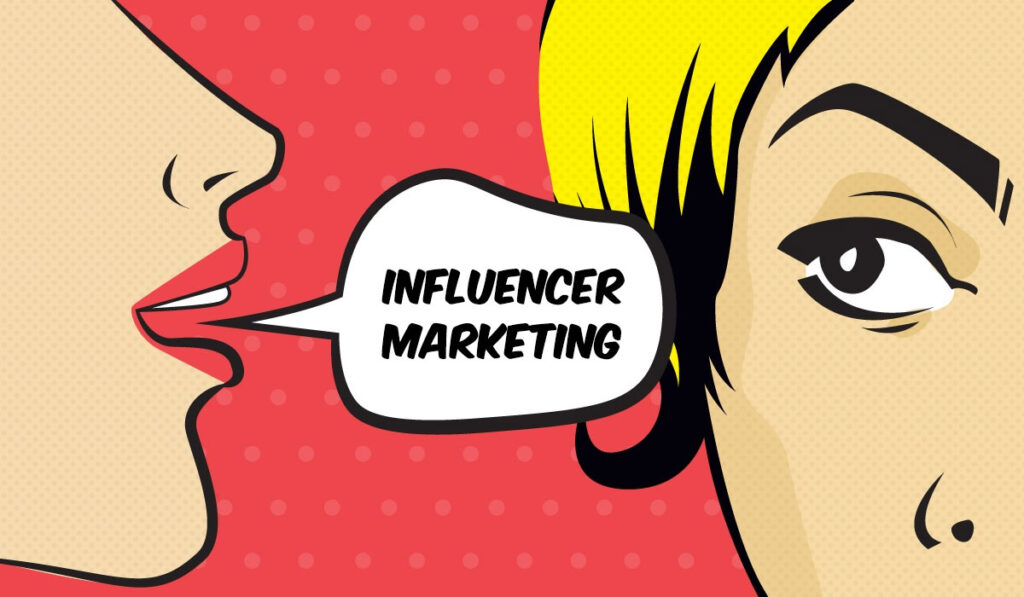
An Alternative Version of Expensive Product Placement. What’s the Future of Influence Marketing?
From Product Placement to Influence Marketing with Denis Lagutenko
Product placement has been around for a long time and is one of the best ways to raise brand awareness. Whether it’s a Bond movie or a favourite meal of a sitcom character, the product placement will benefit the company all the time the media piece appears in the programming. The very presence of a celebrity next to a given product will generate interest and trust in it.
But product placement in movies and TV shows is no longer the only way to tie a product to an influential person. Along with the growth of social networks and the general acceleration of the media process, a new trend has emerged and strengthened: Influencer marketing. Now people popular on the Internet with a big following are doing in their stories and videos what only movie stars were able to do.
Although an Influencer post in social networks does not live as long as a TV series, Influencer marketing has many other advantages: it is more relevant, subscribers initially have more confidence in the influencer than in a fictional character, and, of course, it is incomparably cheaper.Moreover, the global market for Influencer Marketing in 2024 was estimated at 7.68 billion, and in the coming years it is predicted an explosive growth – up to 30% annually. Let’s try to figure out what are the current trends in Influencer Marketing and what awaits it in the future. Denis Lagutenko, the founder of the AdsProfit advertising agency and prominent Crunchbase and Instagram influencer, will help us with his expertise.

Key trends for the future of Influencer Marketing
Scale Change: Micro and Nano Influencers
When it comes to Influencers, the first things that come to mind are big Instagram accounts, youtubers and popular streamers with millions of followers. But as the field evolves, they increasingly occupy the niche of celebrities in the old world of advertising and product placement. But the future focus of advertising campaigns might shift toward micro and nano-fluencers.
If a micro-influencer usually has an audience of tens of thousands, nano-influencers can have a few thousand or even hundreds of subscribers. The main point of advertising through those influencers is about authenticity of experience, because the smaller the circle of subscribers – the more trusting the relationship between them and the content creator.
What works well in this case is a promotional activity such as giving a product for free to get an authentic reaction, rather than paid integration. It’s a horizontal advertising format, like the advice of a good acquaintance, and with a broad campaign it can produce results just as good as buying sponsored posts from a popular Influencer.
Long-term and network partnerships
The promotion of products in social media is moving away from the model of one-time collaborations with Influencers and is increasingly focused on building long-term relationships, as Lagutenko mentioned in his recent interview for The London Economic.
This allows, on one hand, to associate the product with a specific Influencer, and, on the other hand, implicitly confirms its quality – because it is no longer tied to a one-time advertising integration or sponsorship post, but to the identity of the creator himself.
“Together with the previous trend, this forms an approach where it becomes preferable to build product promotion through Influencers, working not with large audiences with the focus on number of impressions, but with a group of loyal Influencers, building trusting relationships with both them and their audiences in a long run,” says Lagutenko.
“This is also called performance-based influence marketing: when the main metric for Influencers is not the view count: in this case, the influencer has to directly drive sales.”
This kind of promotion format also encourages networking, collaborations between Influencers – whether it’s interviews, streams, or events that unite and mix their audiences, multiplying the effectiveness of product promotion efforts.

Specialization and the value of creativity
The growth of Influencer marketing sphere creates a demand for niche content: out of 1,000 experts, the viewer’s attention will be won by the one who finds a unique format and can provide an original perspective, while the one drowning in mediocre content will remain on the outskirts of algorithms and search engine rankings – just “posting content” is no longer enough.
The more specific and unique the experience of an Influencer, the more likely he will resonate with the audience that will find him personally relatable. But no matter how unique this experience is and no matter how deep the expertise, everything starts with the format, which means that the value of creativity and quality of the content will exponentially grow.
This creates a demand not just for a talking head in your phone, but for an expert who approaches things creatively – which is why many Influencers prefer to call themselves ” content creators,” and often do deserve such a title, indeed being excellent videographers and entertainers, in addition to expertise in their niche.
What trends in Influencer Marketing will carry on?
The video won’t die, it will be live
Text is not dying, but it is taking up less and less space on our screens – leaving more room for moving pictures. Video content in all formats captures users’ attention, and with the rise of TikTok, similar formats on YouTube and Instagram, and the technical ability to stream 24/7 on any smartphone owner, video is not going anywhere.
Moreover, the more video content there is, the more popular the raw, live action will be – which means that the Influencers who can most successfully work in live interaction formats, be they live-streams, interviews or new formats like Clubhouse, will take a bigger piece of the pie.

Regulations by platforms and governments
With the arrival of big money come big players. This trend is true for social networks, which have essentially become the public squares of the modern world, and Influencers will follow them, being loud voices in these public spaces.
Every year, more and more internal regulations and rules are introduced on every platform for the use of open and hidden advertising in content, and this directly affects the way advertising works. Rules are tightened for paid advertising, and there is a systematic push to create a more transparent environment and increase audience trust. This inevitably leads to an expansion of the guidelines, both in the communities and on the platforms.
An important factor in this process is pluralism and diversity of platforms: new social networks will emerge and take over novel formats, and the affiliation of these social networks with different countries will further complicate the legal framework for working with them – just think of Tiktok and its ban in the United States, or strict rules of Chinese Internet market.
Is it worth placing your product in the Influencer Content?
“Overall, Influencer Marketing has firmly integrated into the toolkit of modern advertising,” summarizes Denis Lagutenko. “It can deliver as much coverage as a product placement, competes in authority with regular outlets, and goes on par in expertise and authenticity with your trusted acquaintance.”

Will James Bond leave the screen, wearing a particular brand’s suit, in a particular brand’s car? No, but he will be accompanied by hundreds of media personalities from different walks of life, who can pitch that brand specifically to you, like an old friend in the middle of a dinner conversation.
And right after the key scene is filmed – he will pick up his phone and start a live Q&A for fans.